This has been a long overdue post but I really wanted to share this with you and most especially for families like ours, with mixed-race children.
Pristine was born in Japan and she was only 3 years old when we moved to Dubai in 2007. She only spoke Japanese then but as our stay in the UAE became longer and longer (7 years in a few weeks!) and with Pristine attending British curriculum international school, she has lost her grip not just on the language but also being away from Japan too long, been detached from the Japanese culture and tradition aspect.
When we went for vacation to Japan this summer, we enrolled Pristine in the local Japanese public school – something we’ve always wanted to do for years now. She has spent more of her years here than in Japan and we didn’t want her to forget half of what she is.
More specifically, we want her to experience both worlds.
Taiken nyuugaku: a special program for Japanese kids who lived overseas. They come home for the summer, and experience life in a Japanese school. We knew lots of children who did it. We thought it was a great way to reconnect with her roots, not mention hone her Japanese language skills and most importantly, to be with Japanese children her age, in Japan.
PROCEDURE FOR TAIKEN NYUGAKU
A family or friend in Japan needs to visit the local school where you want your child to attend school and ask about the possibility of taiken nyuugaku. Most local public schools will say yes. Your child can attend the local school for up to a month. The procedures will vary from school to school so be sure to check. You will need to speak to the school principal before you go back to Japan and when you arrive, you might need to visit the school personally to pay the fees (tuition fee is very low as elementary education is compulsory in Japan – we only paid for the meals served in school during lunch and books). And if your child has specific food allergies, like our daughter is allergic to eggs and shell fish, you will need to speak to the health administrator beforehand.
Luckily for us, our former neighbor took all the trouble with the paper works so Pristine was ready when we arrived in Matsumoto.
So, what’s it like going to school in Japan?
First, there are no school buses like in Dubai! Children in Japan walk to school every day, for the whole duration of the school year. Be it in the hot summer or cold winter, in sunny weather and even during rain or snow.
During the first few days when Pristine wasn’t familiar with the other kids walking to school and the route so her father had to take her there – in a bicycle! We were traveling on a budget and had no car nor wanted to rent one for this purpose. Our lovely neighbor friend however, lent us their good, old sturdy bicycle we used.
After a couple of days when Pristine found friends who attend the same school and live nearby, she and her dad would still bike off every morning but only until the meeting place where kids gather and walk in groups.
School starts at 8:00 am and since it is located about 2 kilometers away (no kidding!!), everyone has to wake up early, have a full breakfast (very important – reason later!), meet up with friends and start their journey to school.
A long walk is easier when with a friend…
Here they are crossing the pedestrian. The children are trained to raise their hands when crossing the street so they are more visible to the drivers. Japan, up to this day still remains as one of the safest places in the world. Sure, there are crimes reported but today, children in Japan still walk to and from school everyday.
~ the girls stop by to pose for mommy paparazzi ~
This below photo is taken from the school after school hours. The children go home together in groups too. Outside of the school, I saw a group of elderly people with arm bands that read “safety guardians” or something. They guide the children at checkpoints ensuring they go home safely. And the volunteers (retirees, I presume) do this on volunteer basis, unpaid of course.
This is the school policy that enumerates the school’s objective for the children.
From right to left (because that’s how you read Japanese – trivia for you!)…the school aims to ‘produce’…
1. Karada wo kitaeru kodomo – Physically strong children
2. Minna wo daiji ni suru kodomo – Children who makes everyone feel important
3. Yoku kangaeyarinuku kodomo – Children who think and persevere
True enough, as part of their aim to produce physically strong children, they have swimming classes everyday since it was summer and the weather was just perfect for water play. The school also have a rigorous physical education program all throughout the year.
See those mountains? We used to live in Nagano Prefecture in Japan and our city is 800 meters above sea level. It’s beautiful.
Children in Japan learn swimming from when they start going to school which amazed me because in the Philippines, we had no swimming lessons, not until I was in college!
Indoor and outdoors shoes
One of the distinct things about going to a school in Japan is that while children are not required to wear uniforms (in public schools), they need to wear a different shoes when they are inside the building. The pair of shoes is the same for everyone. They change shoes at the school entrance before entering the school halls.
And change to their usual shoes at the end of the day. The indoor shoes will be left at the school.
No school uniform but that bag…
Children in public schools in Japan are not required to wear school uniforms however, there is a prescribed school bag for all. The randoseru is a sturdy, functional backpack that has become a hallmark of Japanese elementary school. The randoseru dates as far back as the end of the 19th century, when Western military structure was first adopted in Japan. Soldiers carried square bags called ransel, a Dutch word, which changed into randoseru in Japanese. Lately, there had been variety of colors sold but it used to come only in two colors: red for girls and black for boys. (Our neighbor lent us Pristine’s red randoseru from one of their daughters who finished elementary school)
The randoseru bags are not cheap ranging from 9,800 yen to 30,000 yen but the intricacies of these backpacks are incredibly well designed with long-lasting sturdiness in mind that they usually last beyond the child’s elementary years in immaculate condition.
Jugyou sankan
We were lucky that during the time Pristine attended the school there, there was a jugyou sankan – Class open day. These are opportunities for parents to view classes so that they can get to know how their children are doing in school and exchange opinions and information with their children’s teacher(s).
After two weeks, Pristine’s last day of taiken nyuugaku came. She was so sad to have to leave her new found friends. She gave a farewell speech in front of the class. Aimed with her renewed, refreshed Nihongo skills, she faced them with her practiced speech. Not perfect but she powered through it from beginning till end.
We bought little trinkets from Dubai to give to the kids. I hope they remember Pristine when they see that little camel paper weight.
We prepared a different set of gift for boys and for girls.
After the tearful exchange of goodbyes, we met the school principal to say thanks.
Pristine loved the short ten days she spent at the local school in Japan. From new friends to the greener environment to the very enthusiastic teacher, the everyday swimming lessons and most importantly, the kyuushoku – school lunches!
Kyuushoku
We got this menu list for the whole month of July with detailed information of the dish that varies everyday. From Monday through Friday, schoolchildren attending elementary and middle schools in Japan have lunches prepared for them at school. The students take turns serving portions. The meals are healthy and well-balanced, containing all the nutrients and calories required for the healthy growth of youngsters.
Lunches are planned by dieticians (you can hardly see any obese children in Japan) and are usually made from scratch, using local, unfrozen, seasonal ingredients. Portions are modestly sized, and the menus are carefully planned throughout the week to emphasize variety and nutrition. Every couple of days, kids might get to try Italian style pasta or Korean food or something a bit more exotic.
One more thing about kyuushoku is that you have to eat everything. For my husband who was born and raised in Japan, that is atarimae – just natural. The Japanese hate to waste food.
And the reason why it’s actually EASY to finish all of the food at lunch? There is no snack time! Classes start at 8 am and lunch is four hours later at 12 noon. Teachers expect the children to have that filling breakfast to last them till lunch time!
Cleanup
Also one thing I really want to share about our Japanese school experience is that – there are no cleaners in school. The children tidy up the things around the classroom and are required to bring a 2 pieces of cloth with their names on it. This first piece of cloth is used to wipe the desks and the other one? for the floors. They wash it and hang it to dry in school.
Japanese schools teach children to become independent in an organized, careful way, including explicit instruction on how to walk to school on their own safely, how to pack for themselves for field trips, and how to care for their things.
When Pristine left the school one last time, it wasn’t only her shoe box that became empty, her heart too. She wished she’d stay longer. Maybe next time. Surely, next time.
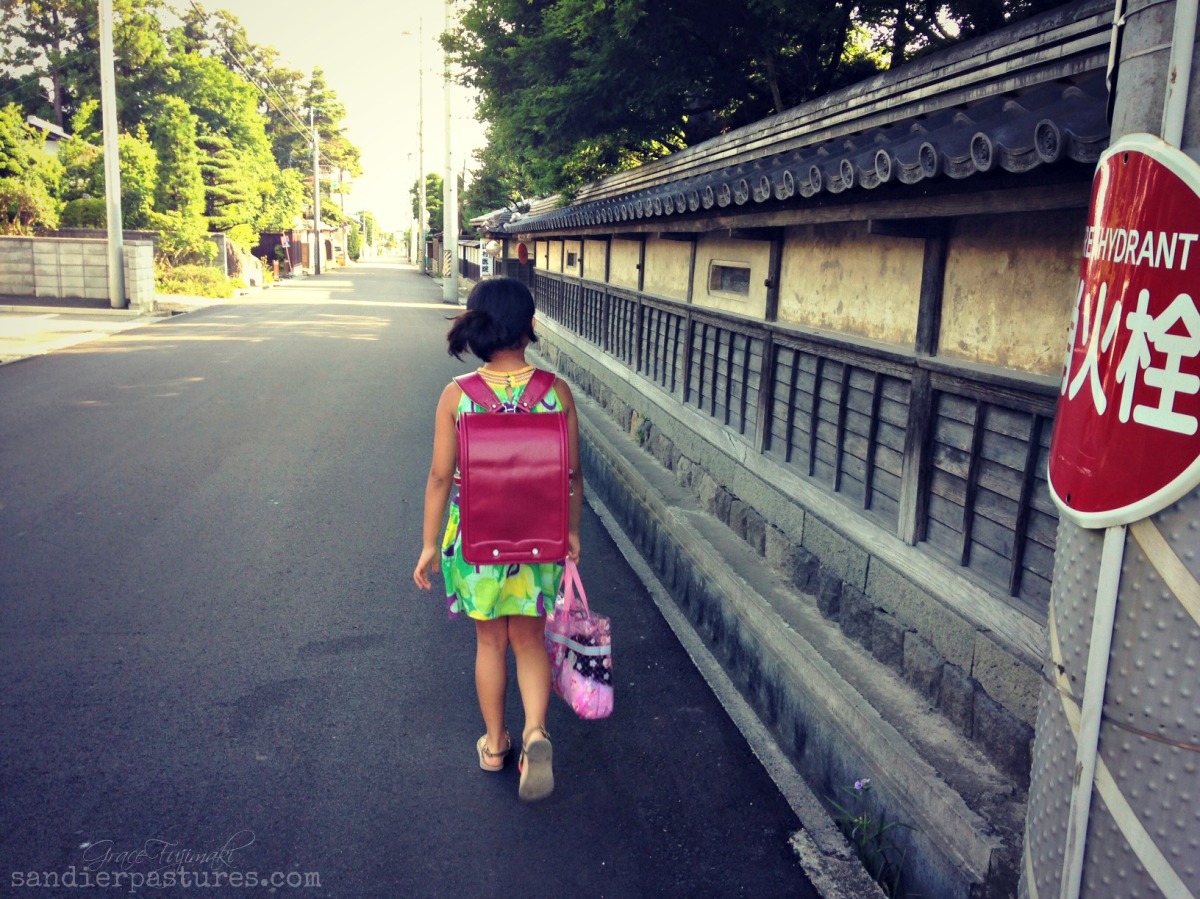
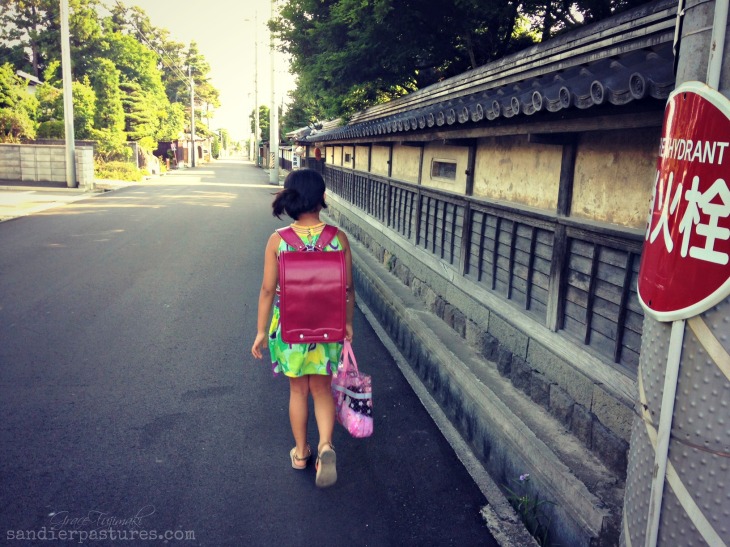






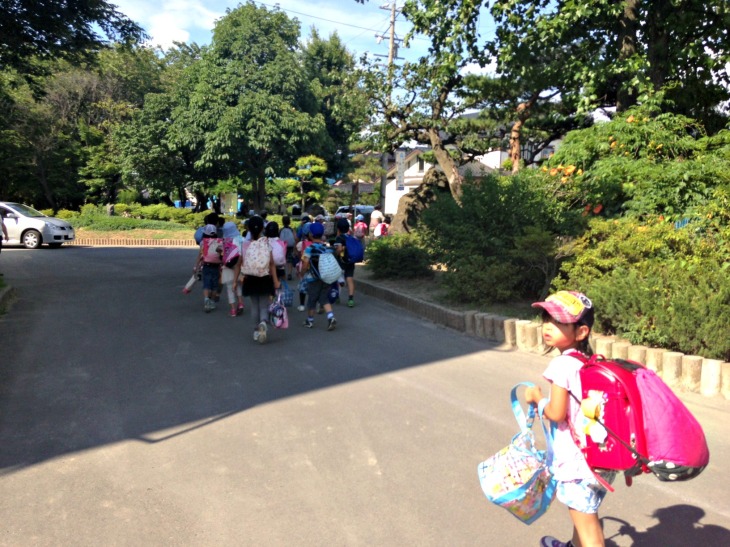
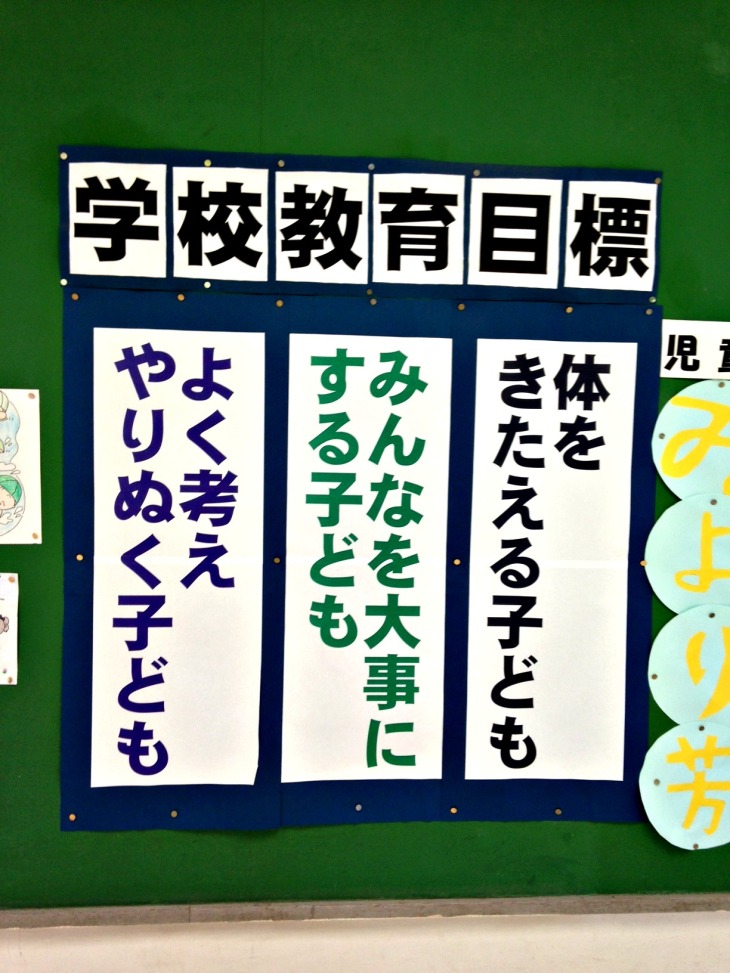

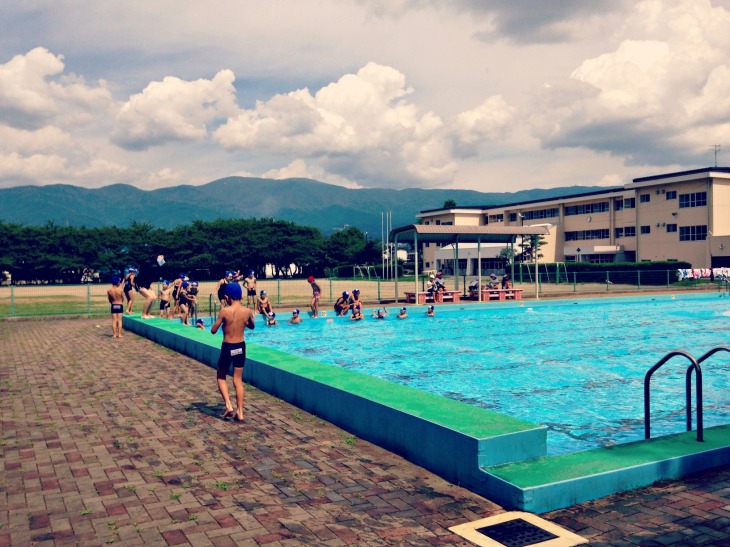

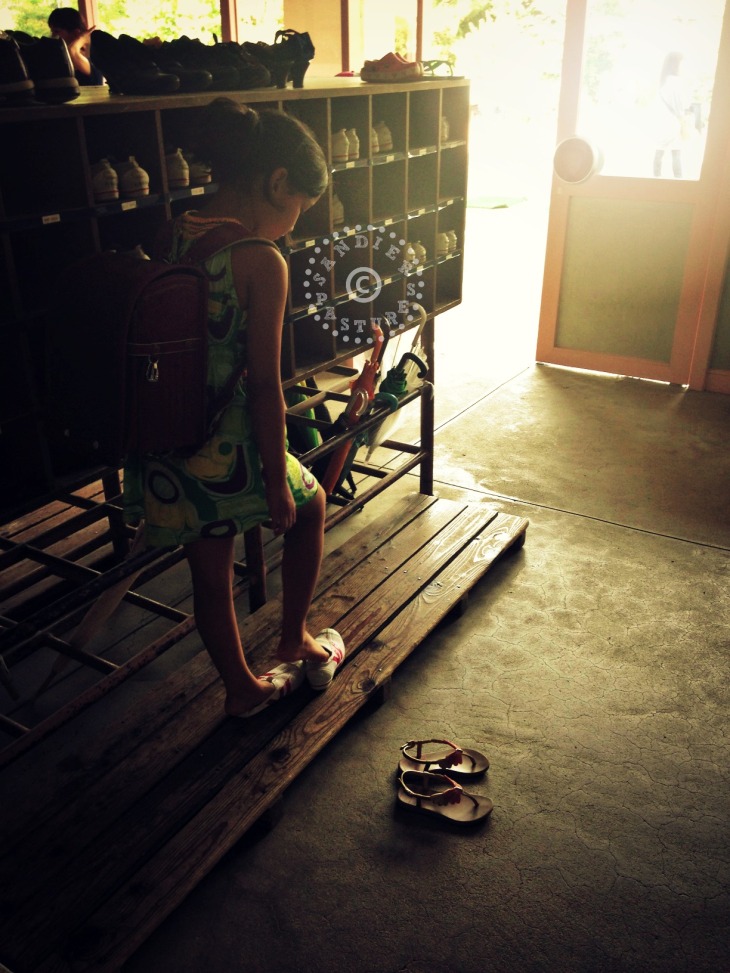








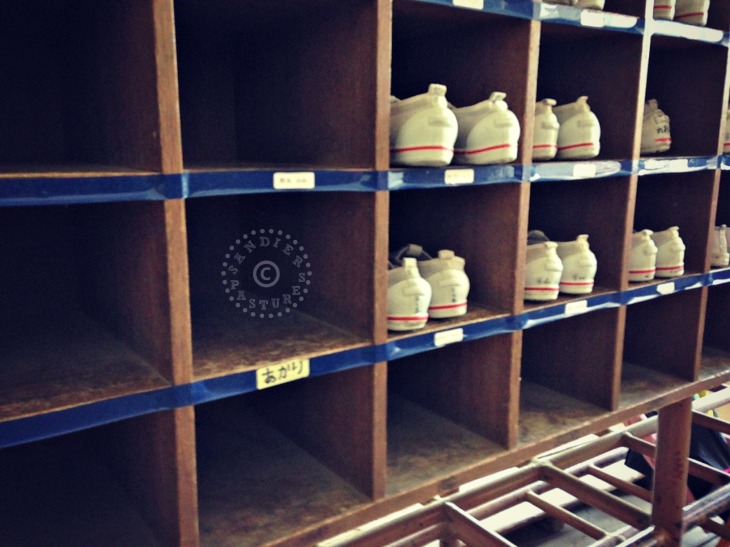
That school bag! I had that when I was young 🙂
LikeLike
Well fantastic…I’m crying now, too. 😦
LikeLike
We also do daily cleaning in the classroom before heading home till high school. I hope they have a similar kind of program back home in Pinas.
LikeLike
Yeah, I remember cleaning our classroom too but here? I think the children here are spoiled in schools…they have teacher assistants to clean up their mess!
LikeLike
I want B to be in a school like that! 🙂
LikeLike
That bag…it’s red and I want it! 😀 Joking aside, school bags here are good only for a year most of the time, getting torn or worn out in places. Those randoseru lasting several years are so good too for the environment
LikeLike
Hi Grace! This is such a nice post!! Makes me love Japan more!! 🙂 I wish it were like that here in Manila – the public schools? Sigh…
Will our country EVER change?
LikeLike